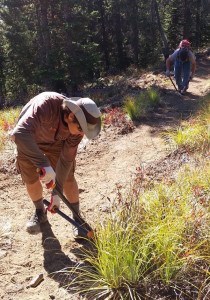
By Susan Drumheller for EDRblog.org.
Sandpoint is a small community in the Idaho Panhandle which, like most communities across the United States, suffered economic setbacks during the Great Recession.
Then, one of Sandpoint’s largest employers, the women’s clothing company Coldwater Creek, declared bankruptcy and predictions of doom and gloom for our local economy soon followed.
But as chronicled in a report by Headwaters Economics, Sandpoint and the surrounding Bonner County has shown surprising resiliency. The area has seen slow and steady growth, with the majority of jobs landing outside of tourism and travel.
One of the reasons credited for the area’s success is one simple fact: people want to live here. Sandpoint and its neighboring communities are blessed with a high quality of life, thanks to ample opportunities to play in the outdoors – whether it’s boating on Lake Pend Oreille, hiking in the nearby peaks, or skiing at Schweitzer Mountain Resort.
To be notified when new EDR blog articles are posted, please sign up for our listserv »
At a recent economic forum, Charles Manning, the founder and CEO of Kochava, a fast-growing high-tech company based in Sandpoint, said, “Lifestyle is an important piece of why we are here.”
One of the key ways people enjoy the surrounding lakes and mountains – and get from one place to another – is by trails. But the area’s trail network is fragmented, so the potential to grow this outdoor amenity and further enhance our quality of life remains an untapped opportunity.
As a conservation organization that works to protect open space, Idaho Conservation League was concerned that the cities and counties were not collaborating on trail management and development that cross jurisdictions. Furthermore, we suspected that trail development was not coordinated or strategic.
These suspicions were borne out by a stakeholder assessment conducted by a neutral outside party. The findings of the assessment – that trail advocates and stakeholders wanted more connectivity of trails and more collaboration among people working on trails – helped provide the impetus for the formation of the Trail Mix Committee. The committee grew from three cities and Bonner County, to include 19 different entities, including non-profits, and state and federal agencies.
The committee operates as a collaborative group, with consensus-style decisions and (mostly) monthly meetings. The formation of the group was serendipitously timed with the opportunity to work with Trust for Public Land (TPL) to develop a county-wide conceptual trail plan. Having the Trail Mix Committee in the initial stages of formation gave us a platform in which to pitch the idea of a county-wide trail plan, to be conducted with TPL’s Greenprint GIS services, and to raise matching funds to help pay for those services.
The county-wide trail plan project was fortuitous because it gave the Trail Mix Committee a focus and structure to many of our meetings. The exercise also unveiled a plethora of new trail projects for trail champions to take on. As the Trail Mix Committee’s secretary, and architect of our meeting agendas, I’m not sure we would have the momentum we do now without that project.
Meanwhile, just the act of getting stakeholders together on a regular basis has fostered relationships between agencies and non-profits towards developing new trails. I can point to two specific new trail projects that have benefited from these budding relationships.
The Trail Mix Committee is still less than two years old and it’s hard to say what the future holds for this collaborative effort. As the action plan takes shape for the county-wide trail plan, it’s my hope that the committee will continue to meet to implement the plan and support the various stakeholders with their individual projects.
One advantage the Trail Mix Committee has is the collaboration has been around the “white hat” effort of building trails, for which the enthusiasm remains at a high level. There’s a reasonable chance that the relationships and goodwill developed through these projects will carry on and facilitate solutions when things get thorny or conflicts inevitably arise – whether it be about trails or other conservation matters.
 The collective work that the Trail Mix Committee has done to identify, ground truth and prioritize trail projects throughout the county, and support individual projects, will hopefully create the kind of buy-in that will ensure that the county-wide system of trails eventually is built. Not only will that be satisfying for the trail stakeholders themselves, but it will also contribute to the economic well-being of North Idaho as a whole.
The collective work that the Trail Mix Committee has done to identify, ground truth and prioritize trail projects throughout the county, and support individual projects, will hopefully create the kind of buy-in that will ensure that the county-wide system of trails eventually is built. Not only will that be satisfying for the trail stakeholders themselves, but it will also contribute to the economic well-being of North Idaho as a whole.
Susan Drumheller is the North Idaho Conservation Association for the Idaho Conservation League. She serves as a board member with the Friends of the Pend d’Oreille Bay Trail and secretary of the Trail Mix Committee. She can be reached at sdrumheller@idahoconservation.org.
